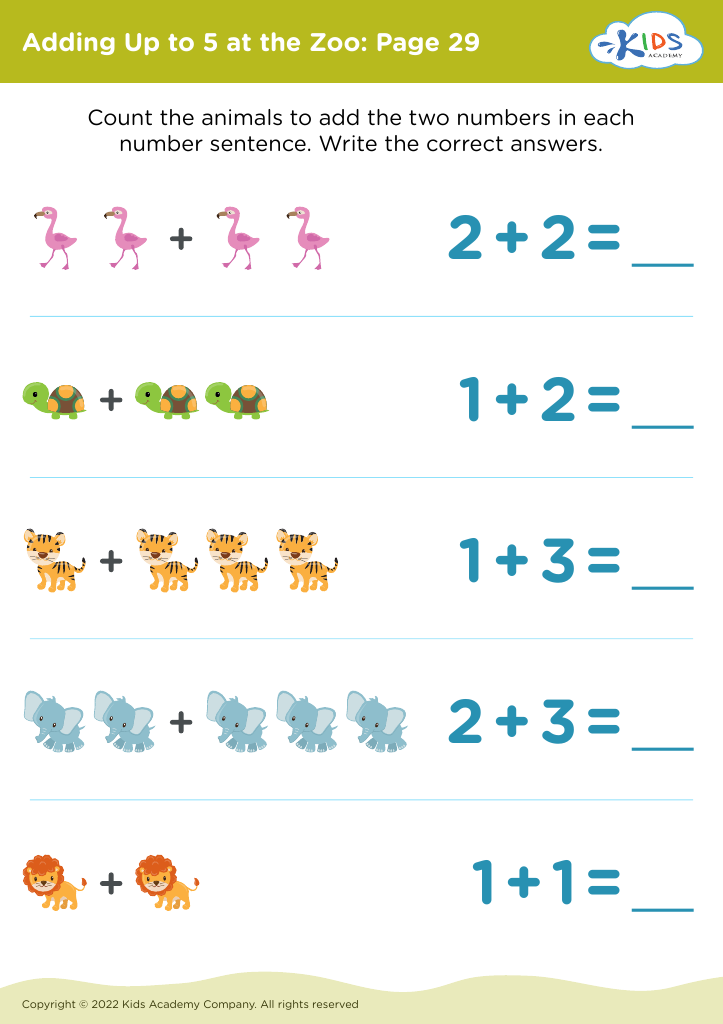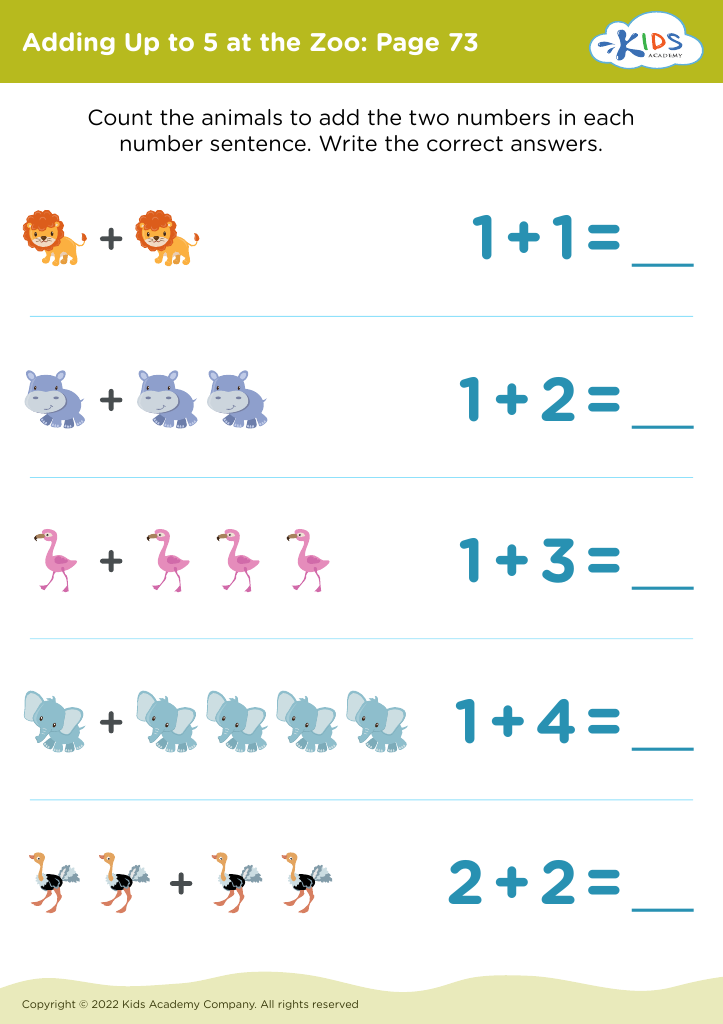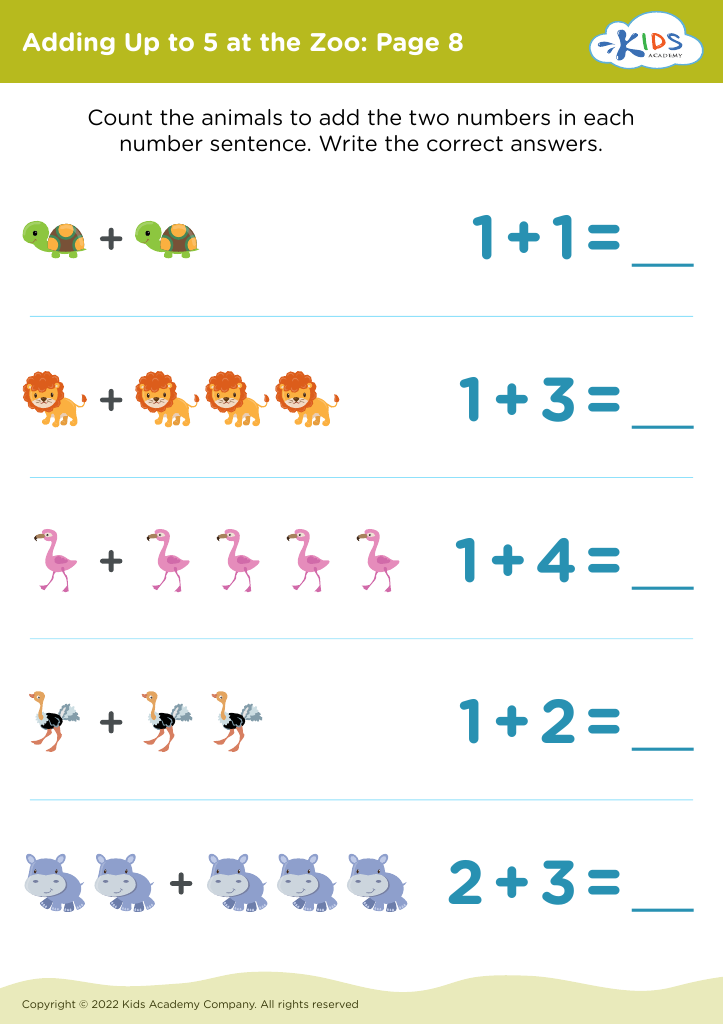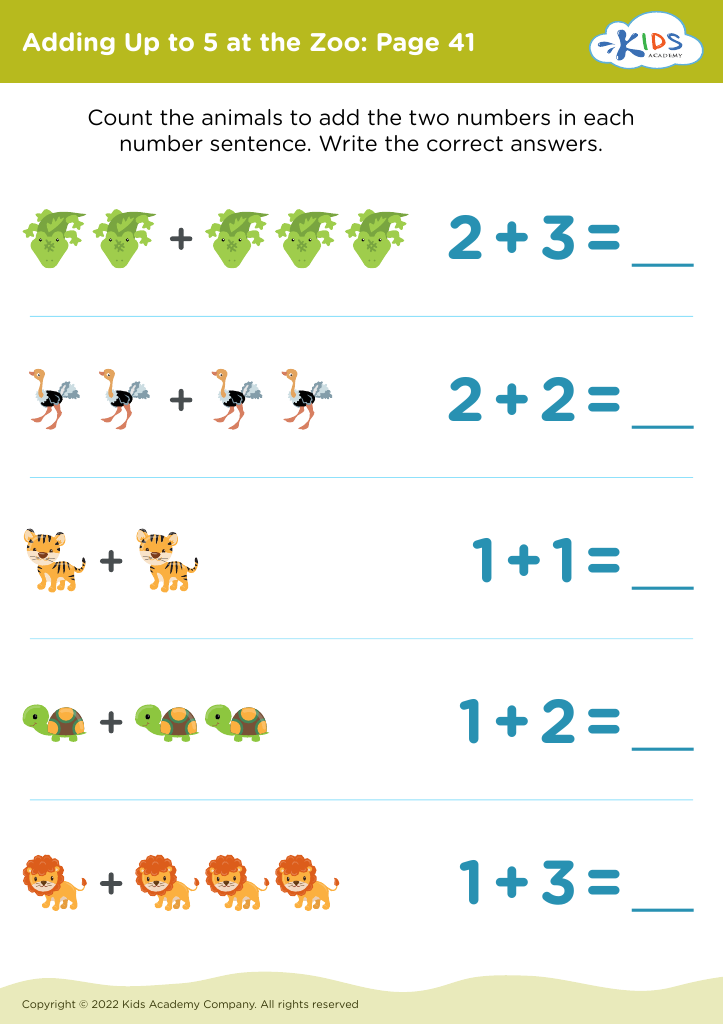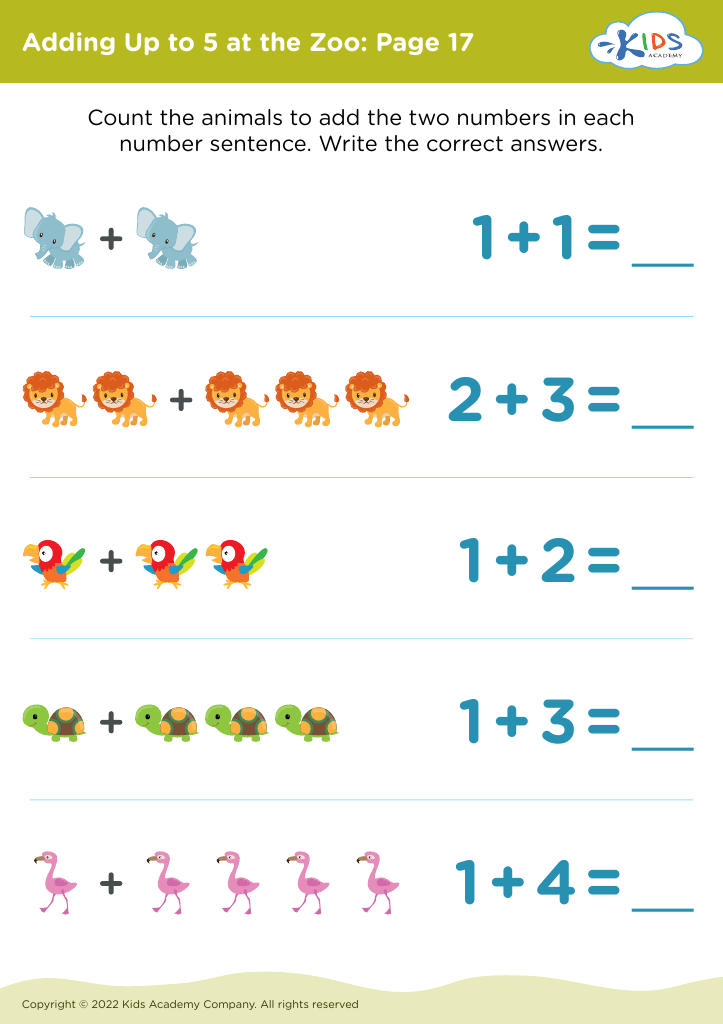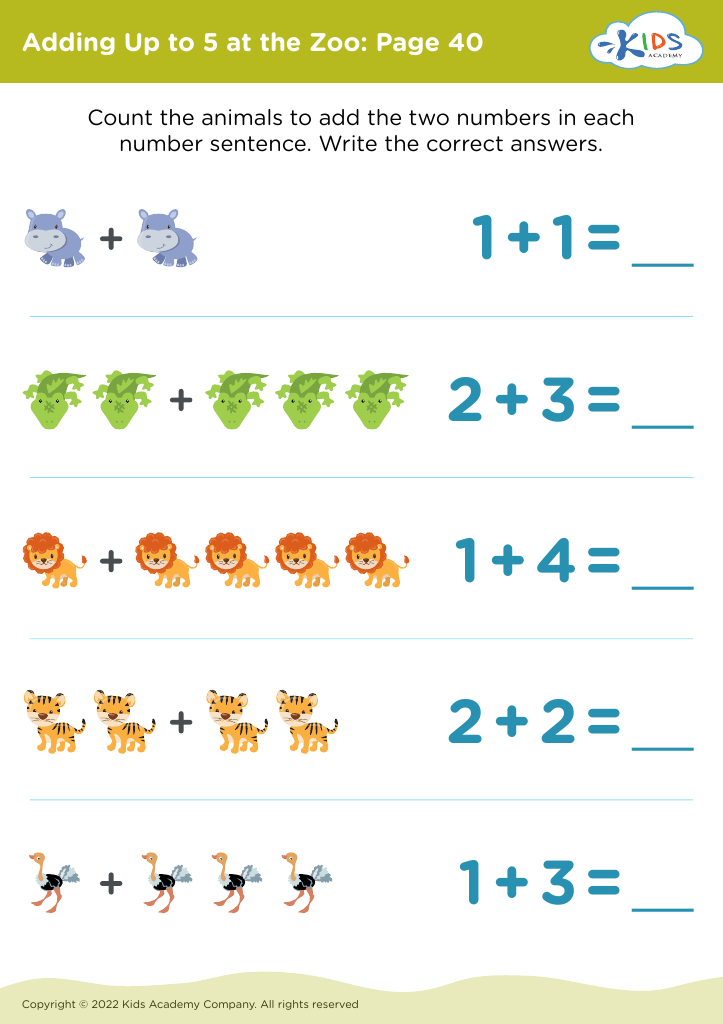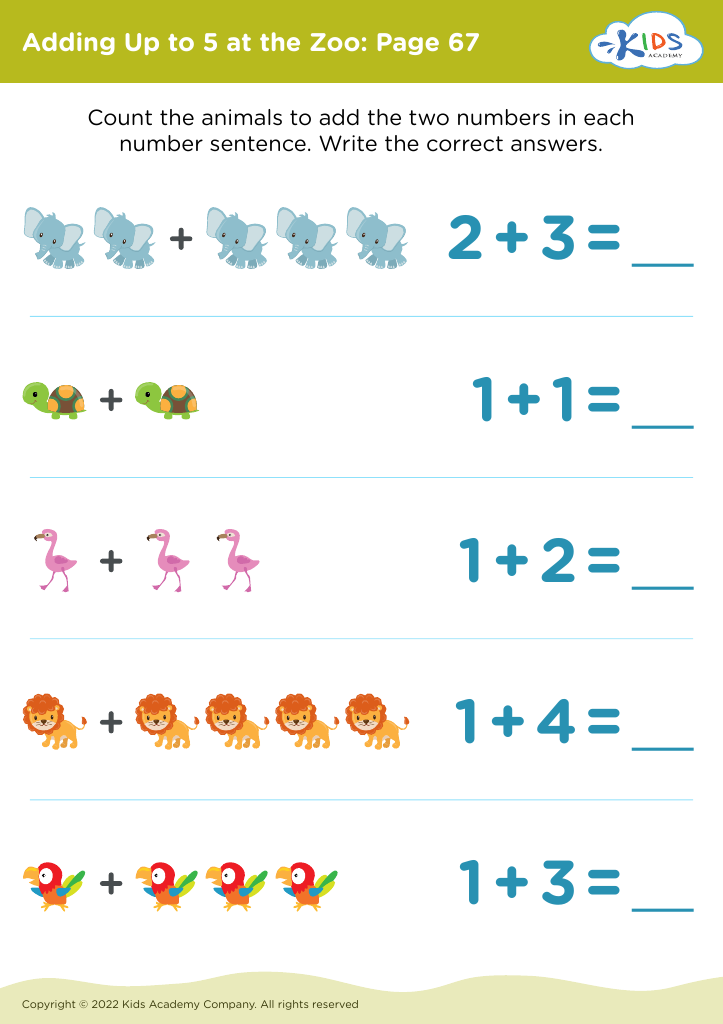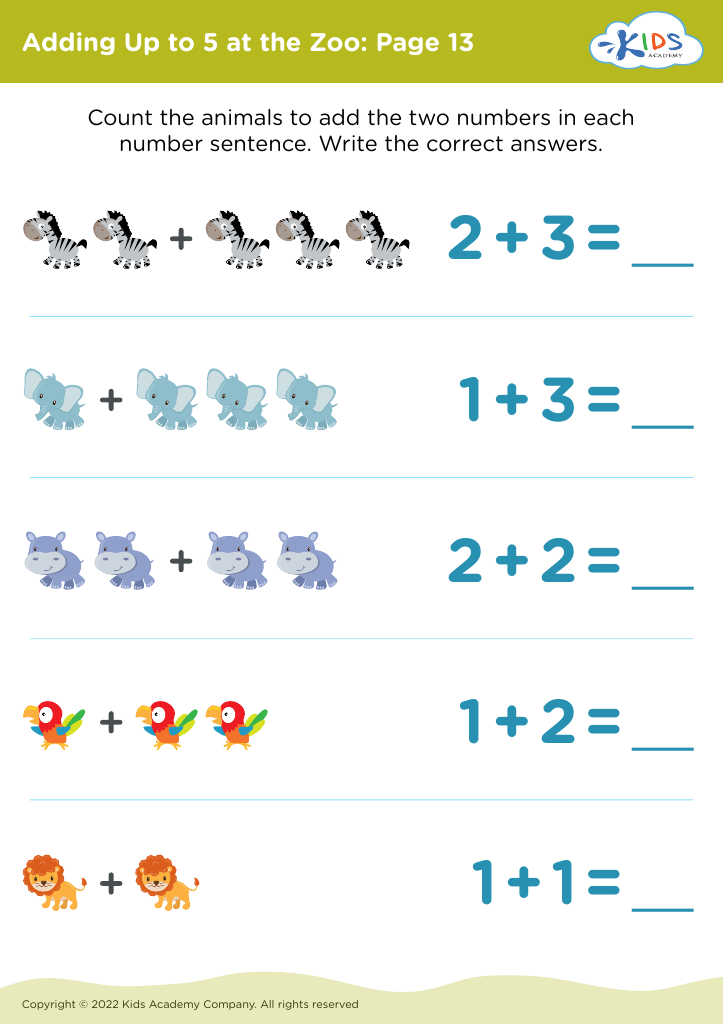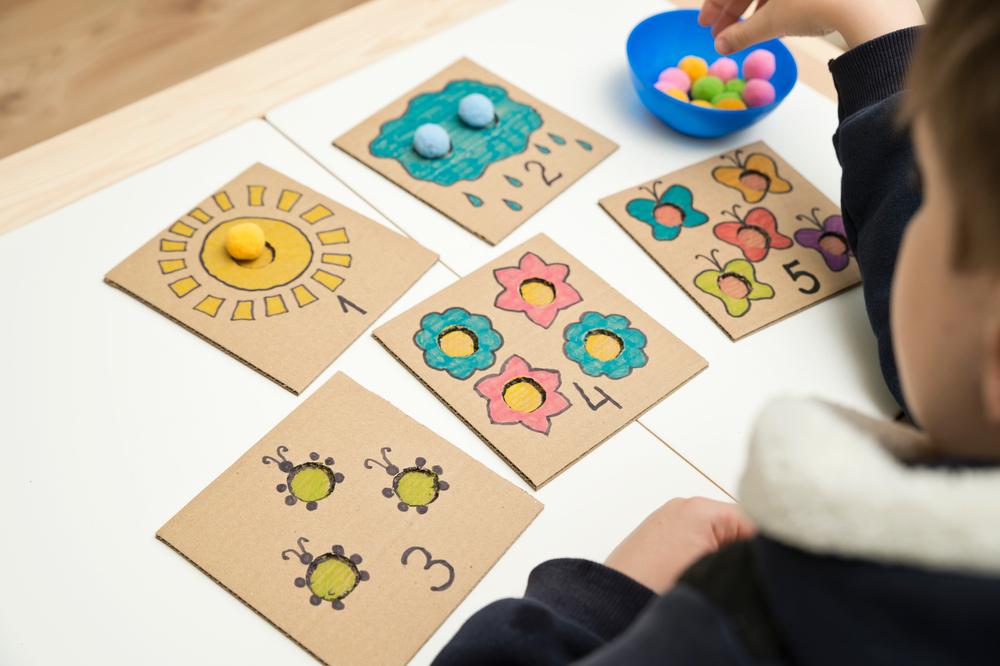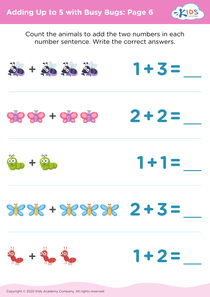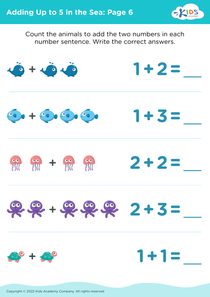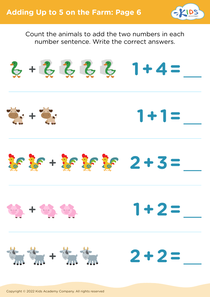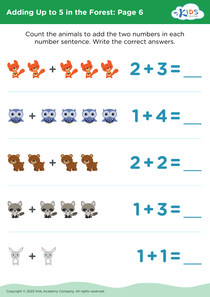Animal identification Adding at the Zoo Worksheets
8 filtered results
-
From - To
Explore our engaging "Animal Identification Adding at the Zoo Worksheets" designed for early learners! These worksheets combine math skills with animal recognition, making learning both fun and educational. Children will practice addition while identifying various zoo animals, enhancing their numeracy and observation skills simultaneously. Perfect for classroom or at-home activities, these printables foster a love for math and wildlife. Bright illustrations and simple instructions ensure young minds stay captivated and motivated. Ideal for preschool and kindergarten students, these worksheets offer a delightful way to boost cognitive development. Start your zoo adventure in learning today!
Animal identification is crucial for promoting both educational enrichment and wildlife conservation, and thus deserves attention from parents and teachers when visiting the zoo. Firstly, learning to identify animals helps to broaden children's knowledge and appreciation of biodiversity. By recognizing various species, children can understand the diverse adaptations and unique traits that animals use to thrive in their natural habitats. This foundational knowledge stimulates curiosity and inspires further learning in subjects like biology, geography, and environmental science.
Furthermore, active engagement in animal identification supports cognitive development. It enhances observation and classification skills, teaches attention to detail, and strengthens memory. These skills are transferable to numerous other academic disciplines and real-world situations.
Equally important, understanding the significance of each animal underscores the message of conservation. Many zoo animals are endangered or vulnerable, and as children identify and learn about them, they become more aware of the threats these creatures face, such as habitat loss and climate change. This awareness can foster a sense of responsibility and a desire to take action to protect wildlife.
Therefore, prioritizing animal identification at the zoo not only cultivates intellectual growth and curiosity but also instills values of environmental stewardship in children—essential attitudes for the sustainable future of our planet.
